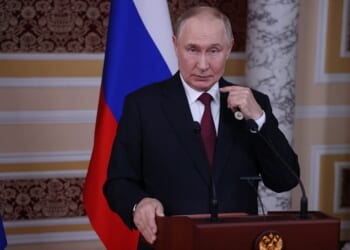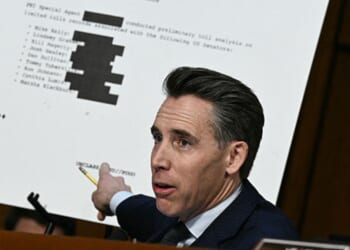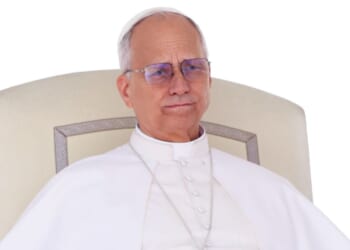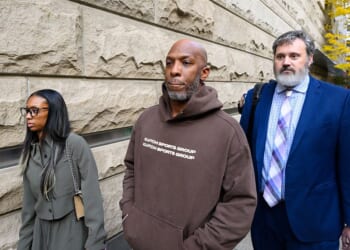It was the incomprehension I remember most, the desperation of the news presenters as they tried, and failed, to understand what was happening. The fact it all unfolded here, in Paris, just a mile from my home, only made it all feel worse. The gunfire, the corpses, the low, keening agony of survivors — the pictures beamed onto my television all made sense on an intellectual level. But, in the end, they might as well have been scenes from some horror film.
Soon enough, the basic facts became clear. On 13 November 2015, 10 years ago today, ISIS-inspired terrorists brought death to the city by the Seine. Three suicide bombers struck outside the Stade de France, in the suburb of Saint-Denis, killing one. Yet it was the roving commandos in the city’s heart that were most shocking. Spreading havoc from a rented SEAT Leon, one group of gunmen killed dozens of innocents in cafés and restaurants. Worst of all, though, was the Bataclan, the music venue where 1,500 rockers were attending a concert. Ninety were mown down in the theatre as they danced; 132 died overall.
Now, a decade on from the massacre, the killings still seem unreal. Naturally, France does its best to memorialise the slaughter. Last Sunday, some 2,000 runners wended their way from the Stade de France to the Bataclan for the so-called Marche de Liberté (“Course for Freedom”). That’s been shadowed by more official homages. Today, Emmanuel Macron and Mayor Anne Hidalgo will unveil a memorial garden at the Town Hall, and the Eiffel Tower will be bathed in the colours of the tricolour. Yet if all this happens under the rubric of Paris se souvient, Paris remembers, that barren bewilderment endures. For all the official homages, the attacks of November are still barely understood, and closure seems a very long way away — bad news for the Republic and the capital both.
In some ways, of course, France has found closure. Quite aside from the commemorations and vigils this week, there have been innumerable films and books covering the mayhem from every possible angle. One striking recent example is Paris, 13 Novembre 2045, written by the sociologist Amélie M. Chelly. Her novel follows the survivors of the attacks and the nightmares that haunt them. More prosaically, the Abécédaire du 13 Novembre, edited by Catherine Brun, covers the atrocity from a kaleidoscope of different directions, covering everything from songs to poems to graphic novels.
Then there were the trials of 20 people charged with involvement in the 2015 attacks, an epic affair lasting 10 months from September 2021. The longest criminal trial in modern French history, it encompassed over 300 lawyers and represented 2,500 plaintiffs, and was greater in scale than even the 1987 trial of Klaus Barbie, the former Gestapo officer and infamous “Butcher of Lyon” during the Second World War.
Beyond their simple vastness, the trials exposed France to countless tales of tragedy. Among the stories was that of Maia, a young architect, who was sitting that fateful night at an outdoor café with Amine, her Moroccan husband. When the attackers came, Amine was killed instantly; Maia was stunned by the sudden silence when the firing finally stopped. Then she heard the gasping and wheezing of a young man she did not know. He was leaning on her, squeezing out his last breath. Maia later said that she would never forget him, but also that she would never know his name.
Beyond these stark personal revelations, incomprehension arguably endures on a societal level. In part, this is explained by the subsequent direction of French politics. For sure, there have been further Islamist attacks, yet the full-scale confrontation between France and jihadi, promised by ISIS among others, never materialised. This was partly due to the hard-headed police and military response to potential threats. A much-improved intelligence service doubtless helped too. Among other things, that involved tightening communications with other agencies, especially the Belgians whose laxity had created a security “black hole” exploited by the terrorists.
All this has arguably meant that France has yet to fully reckon with the ideology that underpinned the 2015 attacks — an ideology which, as an article in the ISIS magazine Dabiq paraded in the aftermath, involved sharing photos of semi-naked corpses. Perhaps more telling was the article’s English headline: “Just Terror!” Amid the gloating, this represented a genuinely new slant on terrorist violence. What ISIS announced here was that indiscriminate murder was not merely a weapon of war, but also a perverted form of justice. It represented a shockingly direct challenge to both Western morality and the West’s conception of justice, based as it is on secular and utilitarian principles.
France, for all its secular earnestness, has yet to truly level with this fact. Certainly, political Islam remains a question to which no one has provided an adequate answer. For the far-Left, led by Jean-Luc Mélenchon, it’s simply a matter of integrating Islam into a non-sectarian Republican programme: an impossibility given Islamist extremists violently oppose the very concept of the Republic. The far-Right, for its part, talks openly of “a war” against “foreign religions”: specifically targeting Islam. But, again, this is mere shadow boxing. Actually tackling France’s internal enemies would, among other things, involve targeting a sophisticated propaganda network and a prison system that fosters the formation of Islamist cells. Stuck in the middle, Macron applies more and more hardline secular principles, even as senior civil servants lately warned of Islamist “entryism” into the French state.
“Political Islam remains a question to which no one has provided an adequate answer”
Yet amid these high-flown political tensions, it’s perhaps Paris itself that has most struggled to come to terms with the Bataclan. At the end of the last century, the Spanish novelist Juan Goytisolo wrote an influential essay called “Paris, Capital of the 21st Century”. Following Walter Benjamin, he argued that Paris could regain its Belle Époque position as “Queen of the World” — by opening itself to outside, non-European cultures. The massacres of 13 November shattered such heady utopianism, revealing the multi-ethnic capital as riven by hatred, especially in its forgotten banlieues where the French-born terrorists lived. This lays bare the identity crisis as the heart of modern France: how a secular, democratic Republic can contain the factions that loathe it.
To be fair, some are still trying to grapple with the attacks. One good example is “Programme 13/11″, an interdisciplinary research programme under the auspices of the Sorbonne. Directed by the historian Denis Peschanski, it is gathering first-hand testimony for future generations. Peschanski himself has called the scheme a kind of “living monument” — even as he believes that, somehow, the savagery of the terrorists can be met with the “sciences” of the French academic system.
Perhaps: yet there is scant evidence to show that many radical French Muslims have been “deradicalised” by such initiatives. That’s shadowed by other traumas: a so-called “French Intifada” may not have happened, but the country has continued to be wracked by jihadi terror, from the 2016 Nice truck attack to the 2020 beheading of teacher Samuel Paty. It all points in the same direction: towards a deepening trauma across France’s collective memory.
Yesterday, every Paris resident received a special edition of À Paris, the city’s listings magazine. Inside, Anne Hidalgo addresses her public, proclaiming a message of “liberty and hope”. But as a Parisian myself, I can say that few of us really believe this — the wounds are still too raw.

















